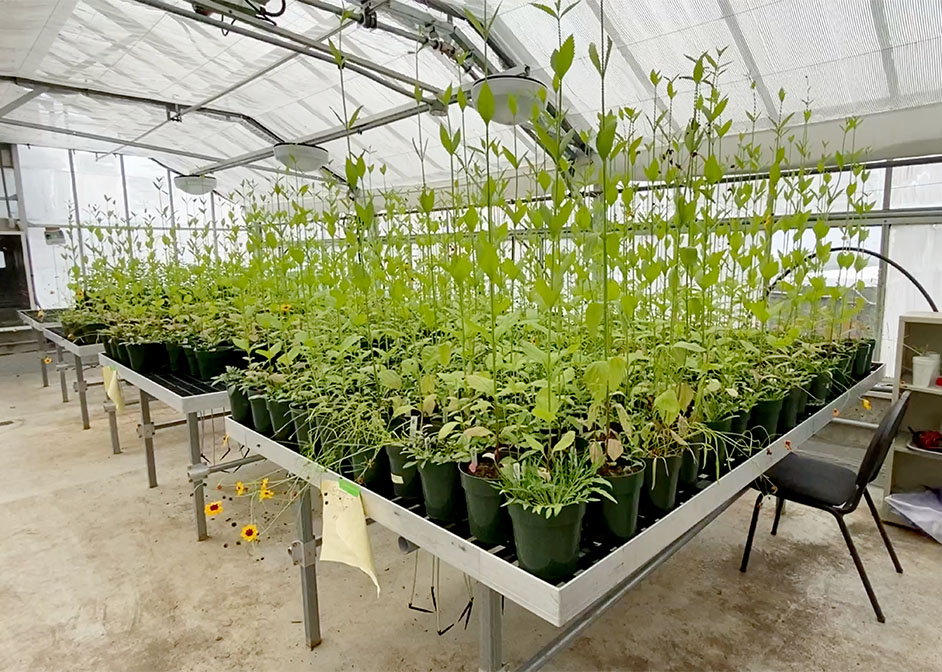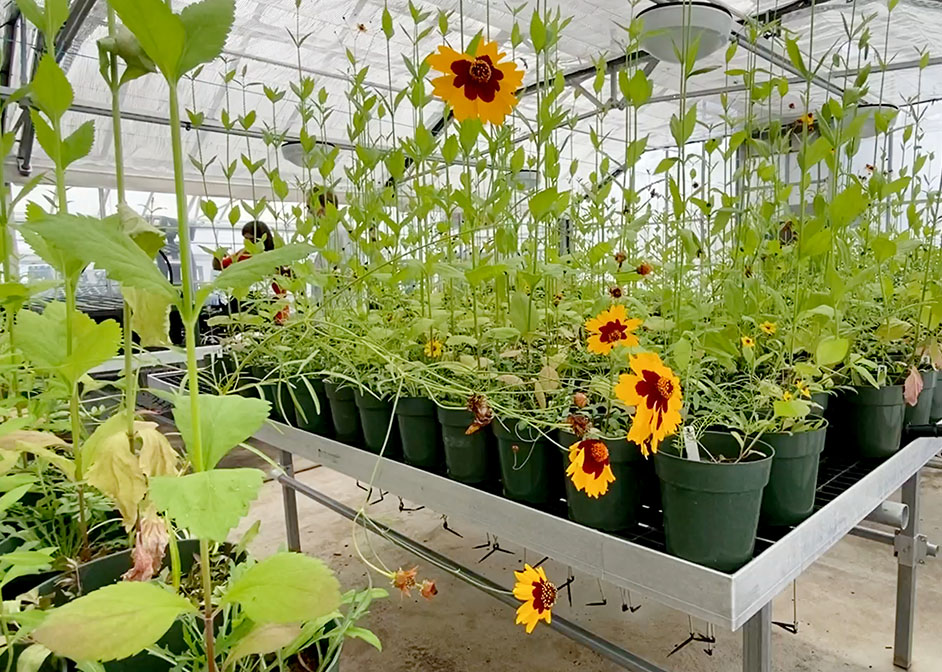Inside NSM: Rooftop Greenhouse
Biology and Biochemistry Students, Faculty Utilize Greenhouse for Experiments
On top of the Science and Research 2 building, is a greenhouse dedicated to research for the Department of Biology and Biochemistry.

“The greenhouse is a major asset to the university,” said Scott Clark, biology Ph.D. student at the University of Houston. “It gives opportunities for undergraduates to get experience with research, and it enables me to do the research I need to do to get my Ph.D.”
Clark uses the greenhouse alongside undergraduate students to conduct experiments to test whether they can suppress the growth of invasive plants.
“Most of my work is with invasive species,” he said. “Particularly invasive plants. They are the bullies of the natural world. My work is looking at how native species respond to this.”
Clark is conducting an experiment to find out if soil microbes from areas where the invasive is long established can be used to suppress the invasive in areas where it is only just expanding. The microbes that have been around the invasive a long time may have evolved or accumulated in a way that they can become suppressive of the invasive, said Clark.
He is conducting the experiment under the supervision of his faculty advisor, associate professor of biology and biochemistry Kerri Crawford at the College of Natural Sciences and Mathematics.
“For a lot of our research, we have to conduct really controlled experiments,” said Crawford. “That requires spaces like the greenhouse where we can control factors like temperature, water, lights, nutrients, etc. Then we can manipulate a single factor or a couple of factors, for example, the presence or absence of soil microbes to see what affect that single factor has on the plant species that are growing.”
Six undergraduates are working with Clark on his project during the fall semester.
“Doing research is really important for students in biology,” said Clark. “A student who has research experience has a better shot at getting into grad school or medical school.”

For a few weeks early in the fall semester, Kayla Zinsmeyer, a biology undergraduate student, worked with the Crawford lab as an assistant. Most of it consisted of prep work and maintenance of experiments.
“I really enjoy this work so far,” said Zinsmeyer. “I like working with my hands; I like working outdoors. It’s been great to be in the greenhouse, to get into the zone with the work. I’m really excited to keep learning more about how these experiments play a bigger role in the research that the Crawford lab does.”
Crawford’s research group has been using the greenhouse since about 2016 when it was renovated.
“It was newly renovated to provide really strict temperature control,” she said, “which was important for a lot of our experiments.”
Clark’s experiment could ultimately suppress the growth of certain invasive plants in Texas, “in a way that’s cost effective,” he said, “much more cost effective than the methods that are in use now.”
Clark adds that working with the undergraduates is not only fun but he also learns quite a bit from them as well.
“In several cases, they’ve come up with a better idea for approaching an experiment than I was originally doing.”
The greenhouse allows for collaboration between faculty, graduate students and undergraduates.
“There are hundreds of thousands of dollars of grants that are behind these projects that are going on in the greenhouse,” Clark said. “Without the greenhouse, we would not have that capability.”
- Rebeca Trejo, College of Natural Sciences and Mathematics
November 2, 2021